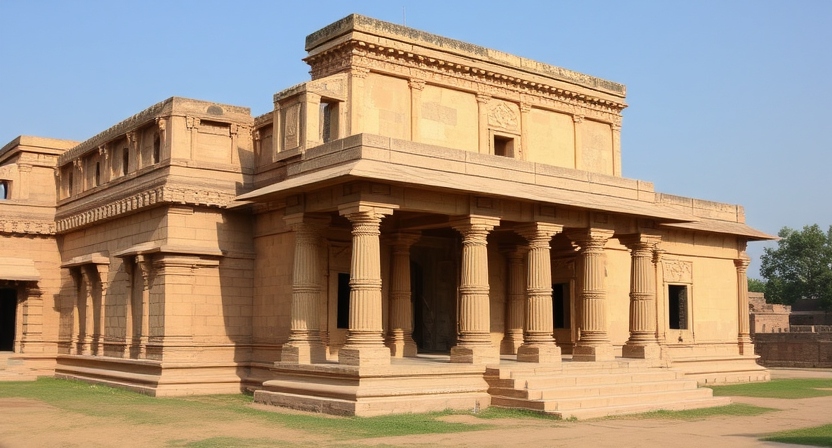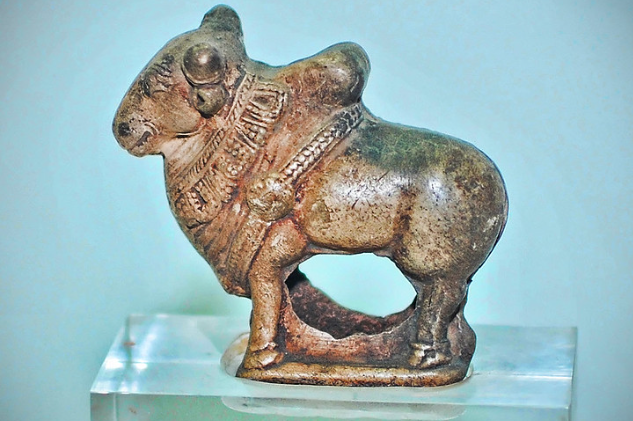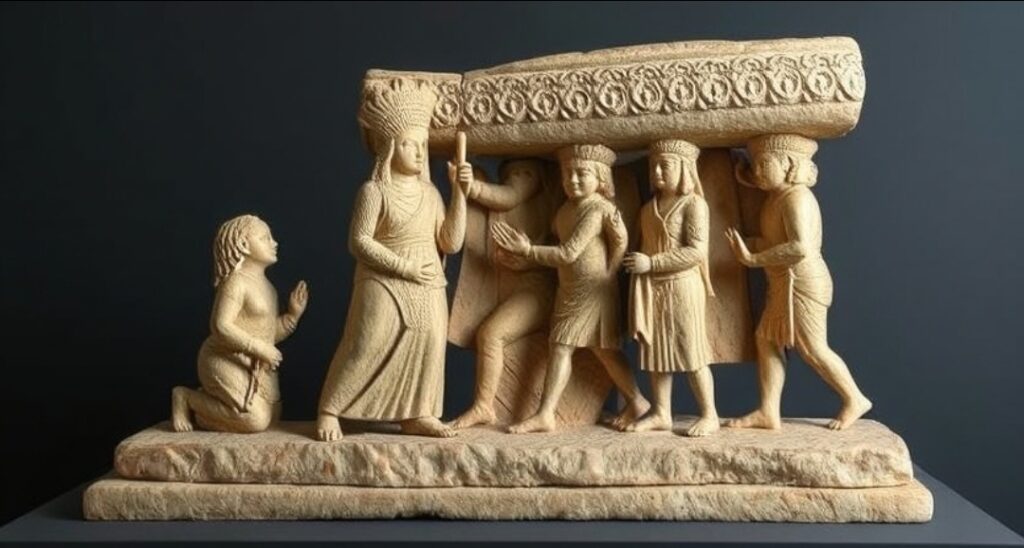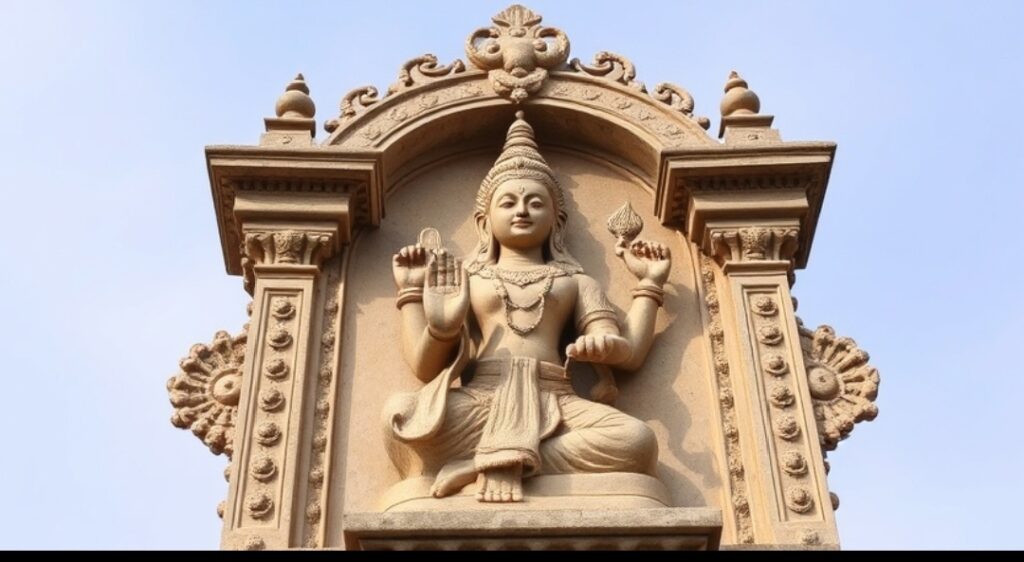Bihar’s Sculptural Heritage : A Testament To Artistic And Spiritual Excellence
The Mauryan Empire marked the beginning of Bihar’s significant contributions to Indian sculpture.


Evolution Of Sculpture Traditional In Bihar : From Mauryan to Modern Times
Bihar, a historically rich region of India, boasts an extraordinary legacy of sculptures that reflect its cultural, spiritual, and artistic evolution over centuries. This tradition spans various periods, prominently influenced by Buddhist, Hindu, and Jain art forms. These sculptures are a testament to the region’s pivotal role in shaping Indian art history, encompassing diverse styles, materials, and thematic representations.
1. Mauryan Sculptures (4th–2nd Century BCE)

The Mauryan Empire marked the beginning of Bihar’s significant contributions to Indian sculpture. Mauryan art is renowned for its polished sandstone sculptures, known for their smooth finishes and naturalistic forms. This period saw a shift from simplistic carvings to monumental art under Emperor Ashoka’s patronage, focusing on Buddhist symbolism.
The Lion Capital of Ashoka, located in Sarnath, is a prime example of this era. It represents power, spirituality, and unity and now serves as India’s national emblem. Another iconic sculpture is the Didarganj Yakshi, a life-sized sandstone statue of a female figure, celebrated for its intricate detailing, sensuous curves, and high polish. These works exemplify the precision, elegance, and craftsmanship of Mauryan artists. The smooth surface finish, often referred to as the “Mauryan polish,” remains unparalleled in Indian art history.
2. Gupta Period Sculptures (4th–6th Century CE)

The Gupta period is considered the “Golden Age” of Indian art, and Bihar played a central role in this flourishing tradition. Gupta sculptures are characterized by their idealized human forms, spiritual expressiveness, and balanced compositions. The art of this period reflects a blend of realism and transcendence, making it one of the finest classical traditions in Indian art.
Buddhist sculptures from Bodh Gaya, such as the meditative statues of the Buddha, embody serenity and divine grace. These statues emphasize spiritual depth through soft facial expressions and well-defined postures. Additionally, Hindu sculptures of gods like Vishnu and Shiva showcase artistic precision and thematic richness. The Gupta artists’ ability to depict intricate jewelry, garments, and bodily forms in stone remains a hallmark of this period.
3. Pala Sculptures (8th–12th Century CE)

The Pala dynasty’s reign in Bihar marked a high point in the region’s sculptural tradition, particularly in Buddhist art. Pala sculptures are primarily made from black basalt stone, bronze, and stucco, reflecting intricate detailing and iconographic precision. These artworks often depicted Buddhist deities such as Avalokiteshvara, Tara, and other Bodhisattvas.
The sculptures from Nalanda, a renowned center of learning during this period, are exemplary of Pala artistry. Nalanda’s artifacts exhibit a mix of religious symbolism and artistic excellence. The black basalt stone sculptures often portray figures with elaborate ornamentation, graceful postures, and serene expressions, symbolizing spiritual enlightenment.
The Pala period also saw the creation of bronzes, particularly in Bihar’s workshops, which were exported across Asia. These bronzes showcased dynamic poses, intricate details, and religious significance, highlighting the global reach of Pala artistry.
4. Terracotta Sculptures

Terracotta art has been a significant component of Bihar’s sculptural tradition, especially in rural and ancient urban settlements. Terracotta sculptures often depict scenes from daily life, religious motifs, and elements of nature. These figures were used for decorative, religious, and functional purposes.
Excavations at sites like Nalanda, Rajgir, and Vaishali have uncovered numerous terracotta artifacts, including figurines of animals, deities, and humans. The simplicity of terracotta art reflects the creativity and resourcefulness of local artisans. Despite its modest material, terracotta art in Bihar is marked by fine craftsmanship and expressive forms.
5. Jain Sculptures

Jainism, which has deep historical roots in Bihar, has significantly influenced its sculptural tradition. Jain sculptures are often found in sites like Vaishali and Rajgir, showcasing statues of Jain Tirthankaras in meditative postures. These sculptures emphasize simplicity, austerity, and spiritual focus.
Jain sculptures from Bihar are known for their minimalistic ornamentation and symbolic representations. The figures are typically depicted seated in Padmasana (lotus posture) or standing in Kayotsarga (meditative stance), embodying tranquility and detachment. These sculptures often reflect the spiritual ethos of Jainism, focusing on liberation and self-discipline.
6. Modern Folk Sculptures

In contemporary times, Bihar continues its artistic legacy through folk sculptures inspired by traditional styles. Modern folk art in Bihar often draws from the region’s famous Madhubani art, characterized by vibrant colors and intricate patterns. Clay and wood carvings are commonly created for festivals, rituals, and decorative purposes.
These Famous Madhubani art folk sculptures highlight the fusion of tradition and modernity, maintaining a strong connection to Bihar’s cultural roots. Brightly painted clay figurines, wooden idols, and decorative panels are widely used in homes and temples, keeping the artistic traditions alive.
Materials and Techniques
Bihar’s sculptural tradition spans various materials, including sandstone, black basalt, bronze, terracotta, and stucco. The use of polished sandstone during the Mauryan period is particularly noteworthy, setting a benchmark for later traditions. Black basalt became prominent during the Pala dynasty, allowing for intricate carvings and durability. The bronze sculptures of the Pala period, crafted using the lost-wax technique, demonstrate advanced metallurgical skills.
Terracotta, a more accessible material, has been used for centuries to create small figurines and decorative objects. These materials reflect the adaptability and creativity of artisans across different historical periods.
Themes and Symbolism
The themes of Bihar’s sculptures are deeply rooted in spirituality, mythology, and daily life. Buddhist art focuses on the life and teachings of Buddha, emphasizing compassion and enlightenment. Hindu sculptures often depict deities like Vishnu, Shiva, and Durga, portraying cosmic energy and divine grace. Jain sculptures reflect the principles of non-violence, detachment, and liberation.
The use of symbolic gestures (mudras), intricate detailing, and realistic expressions in these sculptures enhances their narrative quality. These artistic elements create a profound connection between the viewer and the divine.
Significance and Legacy
Bihar’s sculptural heritage is not just an artistic achievement but also a cultural treasure that has influenced art across India and Asia. The region’s contributions during the Mauryan, Gupta, and Pala periods laid the foundation for classical Indian art. The sculptures from Bihar have been widely appreciated for their technical brilliance, thematic depth, and spiritual essence.
The dissemination of Buddhist art from Bihar to other parts of Asia, particularly during the Pala period, highlights its global impact. Many of these sculptures are preserved in museums worldwide, showcasing Bihar’s rich cultural history.
In conclusion, Bihar’s sculptural tradition is a remarkable blend of artistry, spirituality, and cultural heritage. From the polished elegance of Mauryan art to the intricate carvings of the Pala period, and from the simplicity of terracotta to the vibrant folk sculptures of today, Bihar’s art continues to inspire and captivate. It stands as a testament to the region’s enduring legacy in Indian and global art history.




